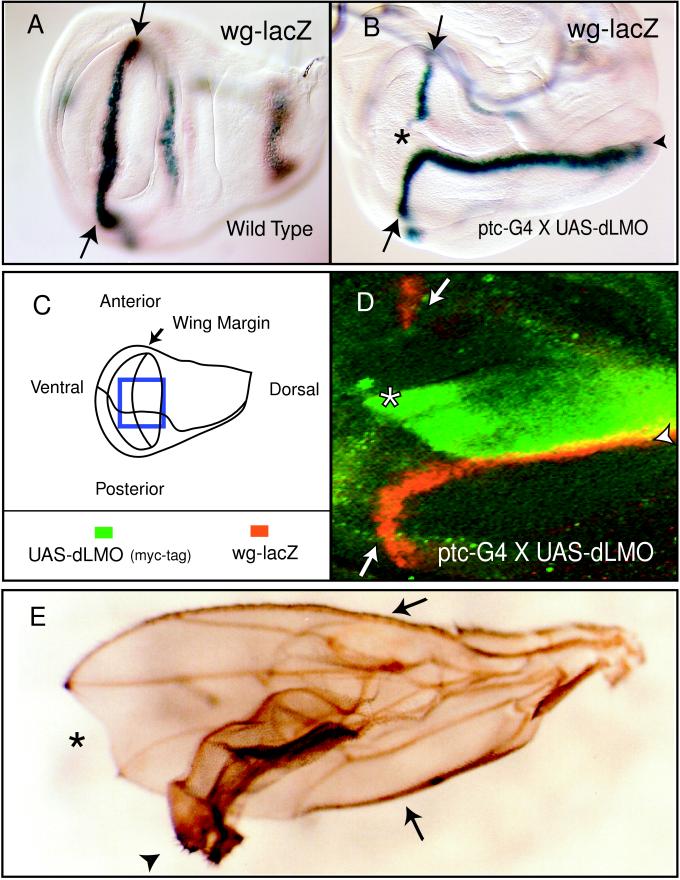Figure 4.
Misexpression of dLMO using ptc-G4 to drive expression of a UAS-dLMO transgene or EP 1394 along the A-P boundary. The wg-lacZ enhancer trap marks wg expression in late third instar wing discs. (A) In a wild-type disc, wg-lacZ is found along the D-V boundary, indicated by the arrows. (B) dLMO misexpression prevents expression of wg-lacZ where the ptc-G4 expression domain intersects the D-V boundary, at the A-P boundary (asterisk). wg-lacZ is ectopically expressed at the posterior edge of the ptc-G4 stripe only in the dorsal compartment, perpendicular to the D-V boundary (arrowhead). Note the malformation of the wing disc at this stage of outgrowth. (C) Diagram of the third instar wing disc showing the compartments of the wing pouch. The box indicates the area shown in D. (D) Immunohistochemistry using antibody to β-gal (wg-lacZ) in red and myc epitope-tagged dLMO in green on third instar wing discs. UAS-dLMOmyc is being driven with ptc-G4. Formation of an ectopic wg-lacZ stripe (arrowhead) occurs at the posterior edge of the ptc-G4 expression domain in the dorsal compartment. wg-lacZ is expressed both in the dLMO misexpression domain (double-staining appears yellow) and in the cells lying adjacent to it along the posterior edge. (E) The adult wing produced when dLMO is overexpressed with ptc-G4 and EP 1394 contains an ectopic wing outgrowth (arrowhead). The endogenous anterior and posterior wing margins are indicated by the arrows. Note the notch in the margin at the A-P boundary because of disruption of endogenous D-V boundary signaling (asterisk).

